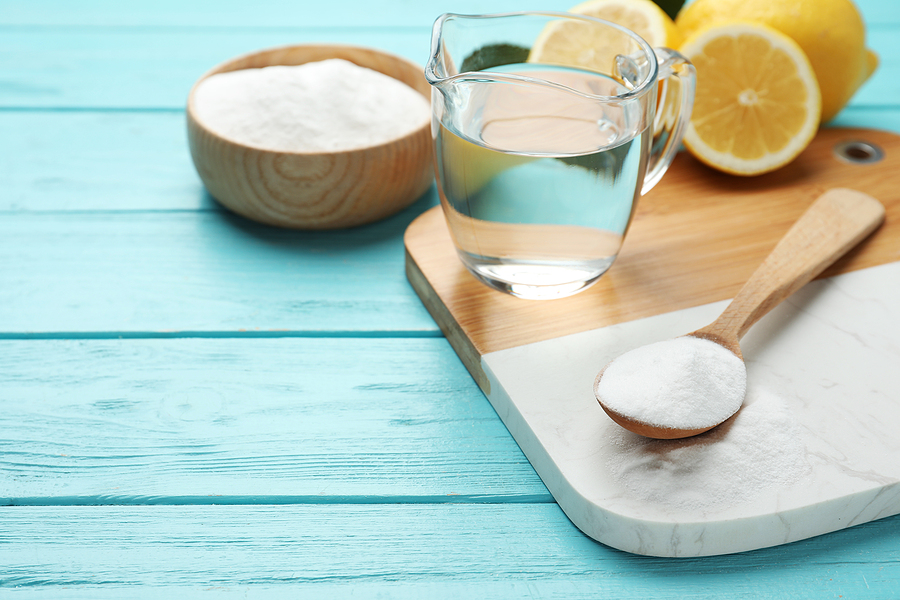Natural Cleaning Solution Tips
Easy on the environment and easy on your pocket natural cleaners are worth investigating when cleaning around the home.
Here are some tips on how to successfully clean your house and appliances while limiting the use of harsh chemicals.
Washing machine
If you catch a whiff of a musty smell when you take clean clothes out of your washing machine, then it may be overdue a clean! Washing machines can harbour mould and germs and need to be cleaned from time to time to do their job well.
Clean the drawer – first, remove the entire drawer and set to work with an old toothbrush and a small amount of white vinegar to get rid of any mould, remembering to rinse well when it’s clean. Don’t forget to clean the drawer cavity too.
Clean around the seals – a little vinegar on a damp cloth should be sufficient to clean the inside of the seals.
Note that vinegar can harm rubber parts inside a washing machine, eventually leading to leaks. For this reason, use sparingly and rinse well after use.
Clean the drum – around 500g of soda crystals works best. Just sprinkle it directly into the drum and then run your washing machine on its hottest wash, ensuring all the germs are eliminated.
Empty the filter – check your manual if you’re unsure how to do this but filters should be emptied regularly in order to remove the fluff and dirt that has gathered inside.
Dishwasher
If your dishwasher smells less than fresh between loads then it may be time to give it some cleaning love:
Clean the filter
Remove the filter from the machine and simply rinse it under a tap to dislodge anything that may have got stuck, then leave to dry before replacing. Ideally, this should be done at least once a week.
Keep limescale and soap scum at bay
Place 250ml of white vinegar in the base of the machine and run a normal cycle, this should help to stop a build up of limescale.
For a fresh smell sprinkle approx. 100g of bicarbonate of soda into a small dish, place it on the top rack and run a cycle.
Always keep your dishwasher salt topped up as it will soften the water, stop the build up of hard water deposits and bacteria.
Taps
For a natural solution to tackle limescale around taps and shower accessories, try either white vinegar or lemon juice. Keep it in contact with the surface by wrapping a vinegar-soaked kitchen towel or scrap of cloth around the affected areas, securing with an elastic band. Leave for a couple of hours or overnight, depending on the amount of limescale.
Always rinse thoroughly with plain water afterwards.
For the upper part of the taps Squeeze half a lemon to 1 part vinegar 3 parts water and spray over the taps, then wipe down and buff for a gleaming finish. Alternatively, give chrome taps extra shine by dabbing with baby oil.
Toilet Seat Stains
Stubborn yellow stains on your plastic toilet seat are not necessarily caused by urine. Bleach can leave a yellow stain and sunlight can affect the colour of your seat too.
Here are two natural cleaning solutions that may help:
Vinegar is a very powerful cleaning agent and will work well to remove stains from your toilet seat. Apply directly to the affected area, leave as long as possible, preferably overnight, then use elbow grease to scrub the stain with a scouring pad.
Bicarbonate of soda (baking soda) is a powerful disinfectant and stain remover. Make a paste with some warm water, smear it on the toilet seat stain and leave for 10-15 minutes. Then scrub the stain with your toilet brush or a non-stick scouring pad (nothing too harsh). Rinse with clean water and wipe with a paper towel.
Flat-Screen TV or monitor
TV screens can be easily scratched or damaged, so a careful cleaning strategy is required. Follow these steps to learn how to remove dust, fingerprints, and other smudges quickly:
- Turn off and unplug TVs and LCD monitors before cleaning the screens to avoid being shocked while cleaning.
- Using a soft dry microfibre cloth dust the screen, gently wiping in a circular motion. More often than not this will do the trick but if streaks or stains remain…
- Wet the microfibre cloth with distilled water, wring the cloth until almost dry then carefully wipe the cloth across the screen working from the top to the bottom
- For hard to remove stains then moisten the microfibre cloth with a 50-50 water and vinegar solution, again wring cloth until almost dry then gently wipe screen. An alternative to water and vinegar is a solution of mild dish soap and distilled water.
Do you have any natural cleaning tips to share? If so then pop a comment in the box below.
Melina - Assistant Editor
Latest posts by Melina - Assistant Editor (see all)
- Top tips for hay fever sufferers - April 14, 2024
- Paysan Breton Cream Cheese Breakfast Wraps - April 12, 2024
- 4 Homemade Sweet Treats for Easter - March 24, 2024
- Playground Memories - March 10, 2024
- The invasion of the duvet: the ’10-second bed’ - February 20, 2024





















